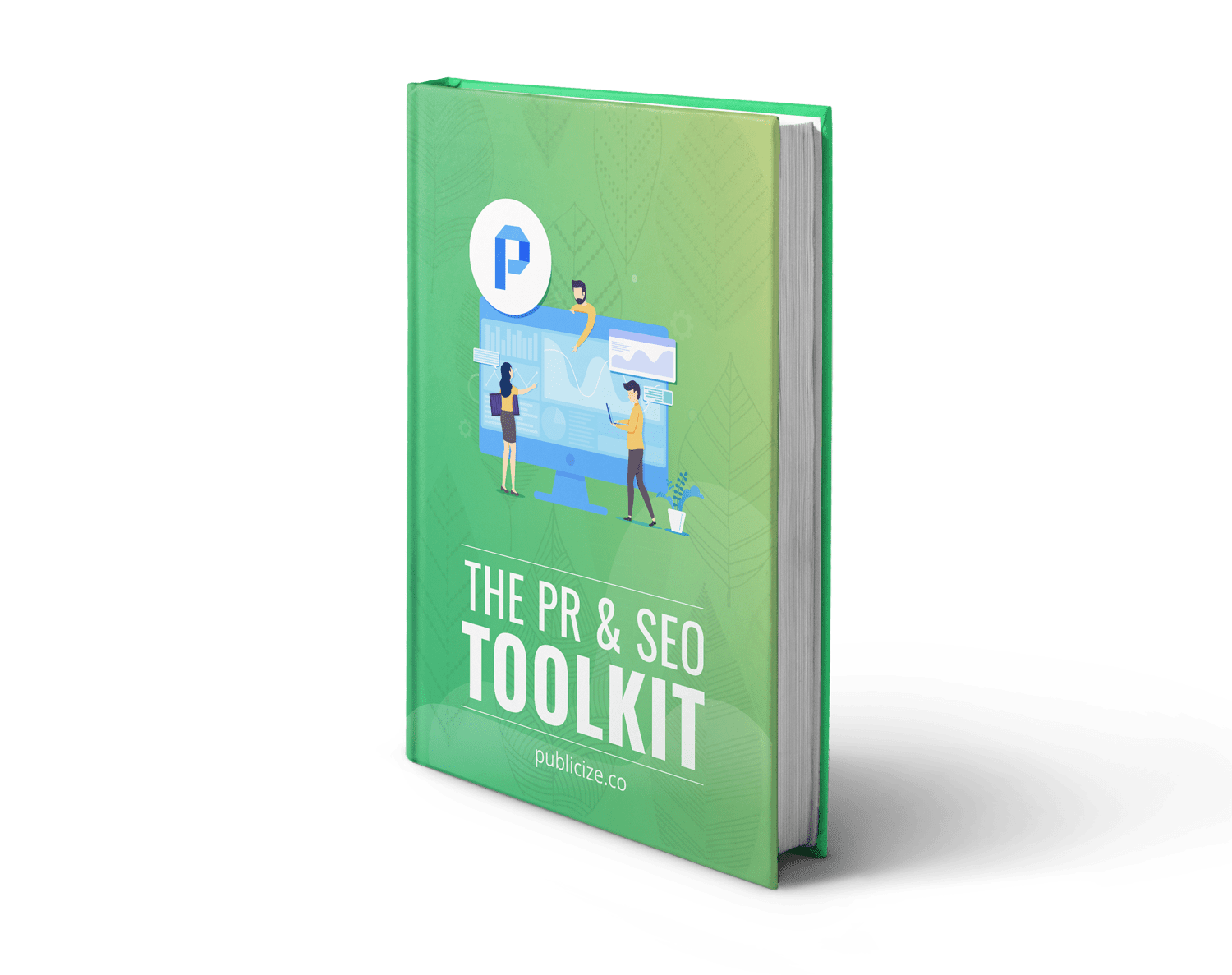There are so many articles touting SEO tips that the topic has almost gone beyond the boundaries of social acceptability.
It would be ironic if only the authors were a bit more self-aware, that SEO posts tend to be written for SEO themselves and are then littered with oversimplifications, outdated ideas, clumsy rules of thumb and thoughtless suggestions.
Another reason there are so many SEO tips articles is because the algorithms behind Google’s rankings have historically changed a lot and marketeers are eager to keep up with the updates. However, Google introduced RankBrain a couple of years ago which was essentially the point from which SEO is now done by AI rather than a series of more discrete algorithms that were easier to fool.
If you’re interested in turbo charging your SEO strategy to maximize your online exposure, get our SEO & PRToolkit:
Reading through all the SEO tips and hints, it seems that the principles which underpin everything are few, sensible and far more helpful than the SEO tips themselves which may well be short-lived and generalised. Therefore, I’m going to stick with two most important SEO principles:
SEO PRINCIPLE 1. Search engines want to provide the user the most relevant content. It’s all about the user.
SEO PRINCIPLE 2. If a lot of action is taken to trick search engines, they’ll be coded to recognise it.
Steer away from black hat SEO
I’m actually going to start with the second one, which mainly refers to keyword stuffing and other black hat SEO practices. Lots of SEOs thought they were very clever in cramming loads of keywords into content in order to trick search engines into giving them a higher ranking. Once Google and the like recognised it their search engines began to avoid pages which used these tactics.
Some other blackhat SEO practices to avoid are backlink manipulation, duplicate content, cloaking, content automation, hidden links and sneaky redirects.
So before you start practising any SEO tips and hacks, just remember this little motto: Shortcuts work for a short time. If companies like Google are going to keep their search engines working for their users they can’t have people hacking their functionality.
It’s all about the UX
The first SEO principle is the most pertinent because it basically describes everything else. What Google wants to know is that the results they’ve delivered have been useful for the users.
It’s important to remember this beyond the tips which generally tell you to use keywords, have plenty of content, provide internal and external links and make sure your content is organised.
What underpins these SEO tips is the user experience which is what Google is after, and we can take these tips in turn because each has changed from hackable to not hackable since Google RankBrain came along.
Use relevant keywords
Now that keyword stuffing is off-limits, it’s best to have a collection of focus keywords that define your article’s intent and keep it honed. This sounds like just employing the opposite of keyword stuffing but really it goes to the heart of user expectation.
If someone types in a phrase in Google which happens to be the exact keyword you used for an article, your article may well appear. The user then clicks and starts reading if the article aligns with the target keyword.
Google doesn’t want its users having to attempt multiple searches because it’s a bad user experience. From a website’s perspective, people landing then immediately bouncing is equally unwanted as the bounce rate goes up and time spent on the page decreases.
So the importance of keywords in search engine optimization is evident but only when done right by aligning what your article is about with what people will type into a search engine.
Have plenty of content
So here’s the thing. There are two versions of “plenty of content”, one refers to the number of posts and the other refers to the length of each post.
It’s always been true that the number of posts should be high because it means you’re capable of hitting a variety of keywords, drawing interest from a broader range of people, getting more views and increasing your sites ranking.
The second version is where thinking has changed. It used to be the case that having lots of posts was so important that SEOs would advise to keep article length around 300 words and pump out plenty of articles. Now that’s slightly different. Another way Google measures whether it was successful in delivering you what you want is the amount of time you spend on a page. People aren’t likely to spend much time reading short posts. The actual length varies wildly, I’ve seen suggestions of 800-1,200 all the way through to 2,500.
Basically, long-form content is better for SEO, though you’d have to be a better writer to keep the reader’s interest for that longer. But what is ultimately true, has always been true and will always be true is that your post should be as long as is appropriate for what you’re trying to say.
Provide internal and external links
Internal links and external links are kind of the same thing from two different perspectives. Internal links and other websites linking to your site are one of the ways Google ascertains how relevant and popular your site is, not just to users but to other writers. It acts like a peer recommendation.
External links should be for content which has the same or a similar keyword, which in turn boosts the ranking of the site you link to and the strength of the focus of your article on its keyword. If you write an article with the keyword “cryptocurrency” and then link the an article about an art gallery, Google may reasonably surmise your content is a bit confused.
Again, RankBrain can work out when you’re just trying to stuff your article with links. Maybe there’s an optimum number, but don’t worry about that. RankBrain is going to start learning human behaviour and any marketing ploys will just confuse the situation. Think of them like any grammatical device: use them where appropriate and don’t use them where not appropriate.
Organize your content
Shocking, right? This used to refer to things like website categories, making sure you haven’t got two articles with the same keyword, and splitting longer articles with useful subheadings which use the keyword. This is all still true but what is becoming truer with RankBrain is the user experience of your website.
SEO content clusters is a great example of SEO and content marketing working together to improve the user experience. Creating relevant content around the same topic, organizing it well and linking it together with relevant internal links helps the user to navigate through your site and stay there longer.
As I mentioned earlier, the longer people spend on your website once they’ve clicked on it from Google, the higher the ranking Google will offer you. So if your website is pretty, well organised, and easily navigable then this will happen. Those old HTML pages of the past won’t work anymore.
Summary
This article is all about a single and simple trend which we can assume to become truer and truer over the next couple of years. Technology like RankBrain means that search engines want to optimise their results for user behaviour. What does this mean? That clickbait headlines, short articles stuffed with keywords, listicles, quizzes, etc, have all been shown to be mere trends.
Search engines are going to start moving toward natural language processing and I wouldn’t be surprised if they started ditching things like keywords and links entirely in favour of as-yet-unknown ways of measuring genuine behaviour. Online writing, having deviated from print writing thus far, may well now return to its original form and purpose as technology becomes smart enough to measure it.
So instead of learning short-lived SEO tricks and hacks, focus on providing the most valuable content and best user experience – an SEO principle that you can be sure will never expire.






